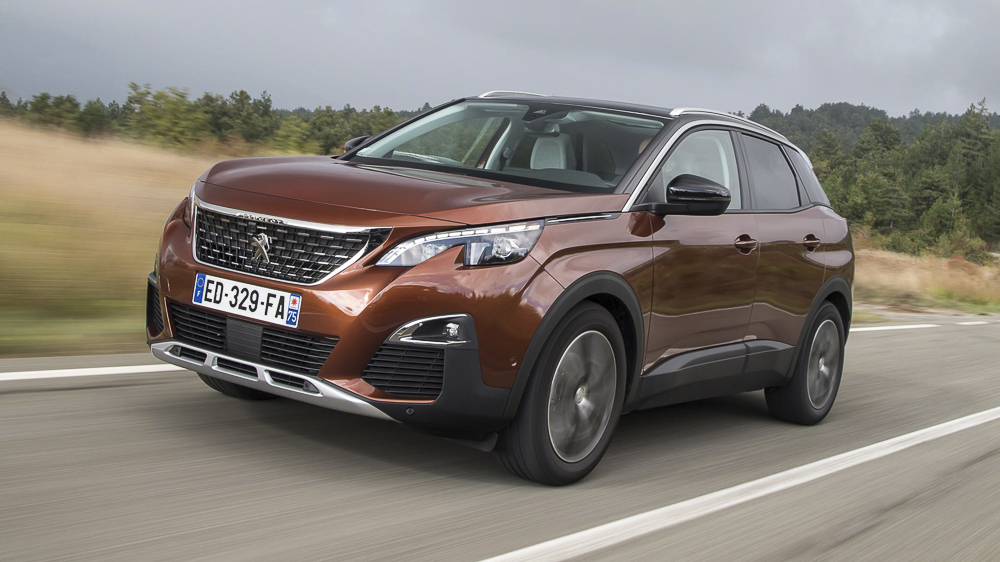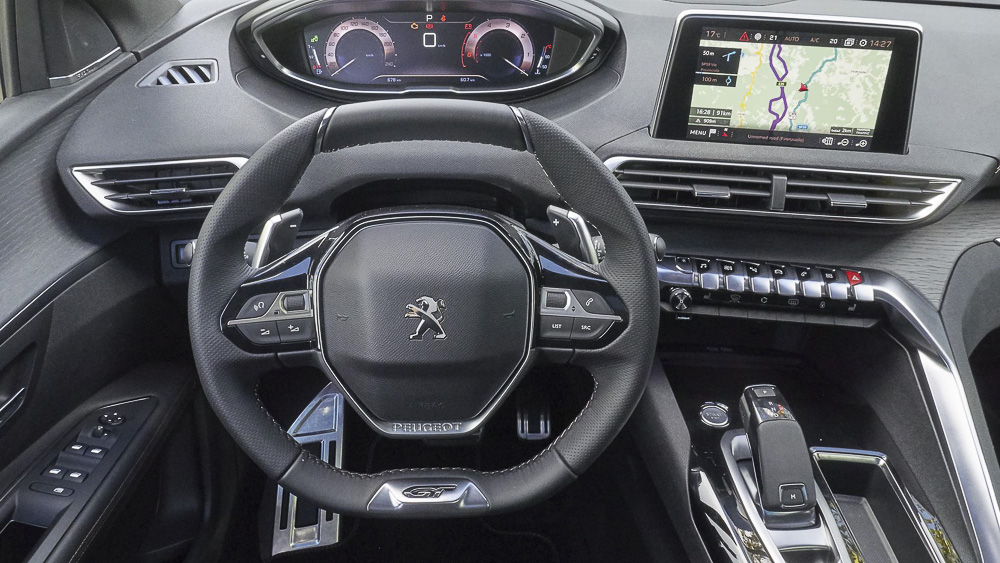
Peugeot 3008 eh? Bit of a transformation…
Quite. The original 3008 was a rounded thing, a shape that was good for space but frankly one that only its mother could love. Peugeot has twigged that what SUV buyers want is something chunkier. So the 3008 is pitched at the very heart of the territory defined by the Qashqai and Kuga, recently joined by the Renault Kadjar and Seat Ateca. These are Europe’s new family cars. It’s a bloodbath out there and Peugeot knew if the new 3008 wasn’t super-competitive it would be given a right kicking.
And is it?
In short, yes. A no-excuses contender.

What, you’re not going to give me the chance to laugh at another slightly flaky French interior?
Absolutely not. Frankly I suspect some people will walk into a Peugeot showroom and be sold a 3008 in less than 60 seconds. They’ll climb behind the wheel, look around, turn on the ignition to wake up the screens, prod a few buttons, then sign on the line.

What’s so special about it?
The interesting and original design puts a high-set angular display pod ahead of the driver, with a small flat-topped steering wheel below it. In the cabin centre is the main touchscreen display – and it’s this large in all versions. Below that is arrayed a set of high-quality satin-metal piano keys for short-cut switching between screen functions. This construction is clad in a novel and agreeable set of plastics, cloths and woods, with LED accent illumination to jolly it up at night.
Fair enough. But Peugeot’s display screens so far have been horrid.
They have, and the bosses candidly admit it. But not here. The touch-screen has high-res well-drawn graphics, low-latency response and smooth responses including pinch-to-zoom. The driver’s display, also a screen, is highly configurable too.

But can you actually see that display?
Ah yes, lots of people complained that in the 208 and 308, it’s hard to adjust the wheel so it doesn’t block the dials. Here it’s clear enough. The driving position is fine.
OK, how does it go?
First car I drove was the top-end diesel, with 180bhp. But it only comes with an indecisive – if smooth-shifting – six-speed auto box. It feels a bit hamstrung, and the engine struggles noisily when it’s making max effort. Peugeot says that thanks to the transition to the firm’s EMP2 modular platform, it’s much stronger and 100kg lighter than the old one. Well it doesn’t quite feel it with this powertrain. Afterward I had a go with a 165bhp petrol 1.6, but same transmission, same issue.
Finally a pair of manuals – a 1.6 diesel and a three-cylinder 1.2-litre 130bhp petrol. Their all-out acceleration figures aren’t so good as the big engines. But I found myself enjoying the 1.2 the most. It weighs 200kg+ less than the 2.0-litre diesel auto and has a happier nature.

Do you have to slow down for corners?
Not much. It’s an SUV and sensibly they haven’t tried too much anti-roll stiffening. Instead it heels into a bend, but predictably and progressively, the steering’s response nicely in tune with it all. And there’s not a whole much understeer. In fact there’s even an echo of that old Peugeot hatch business of trimming the line with the accelerator, though there’s no steering feel as you do it. If there are bumps in the bend, even bad ones, the damping keeps things under control without clenching the body uncomfortably.
Ah comfort. Any of that?
Lots. Because the chassis is soft this is a fine-riding SUV, though there is a little bobbliness at low town speeds. The seats are well shaped and cruising noise is low. And talking of cruising, it tracks straight, even though the small steering wheel might have fooled you into expecting it to be twitchy. In the back space isn’t so great – the optional glass roof cramps head space, and unless the people in front raise their seat height you can’t get your feet in under.

But it’s only FWD. Any good off-road?
Plenty of ground clearance and soft suspension is a recipe that’s done French farmers proud since they all drove white Renault 4 vans. But optionally you can also get off-road tyres paired with a terrain-switchable set of different traction-control calibrations that will take it a fair way up the hill. Coming down, Peugeot has added come ingenious new interface features to everyone else’s decent control electronics.
If the only thing that will satisfy you is a 3008 with true 4WD, wait a year for the Plug-In Hybrid version, which will have a petrol (yes petrol) engine in front and electric drive at the rear.

Peugeot hasn’t made much fuss of autonomous driving. Do you get any help?
It’s got all the stuff of a self-respecting 2016 launch. Some of it comes in extra packs mind, as with the opposition. Effective lane-keeping with steering nudges to hold you between the lines. Camera recognition of road signs. 360-degree camera for parking. Radar cruise control (which on the auto versions will slow you down to a stop). Auto emergency braking that even recognises pedestrians. Blind-spot warning.
Woo, buzzword bingo.
There’s more… integrated multi-modal urban transport. Find a parking space, open the boot, take out and unfold the optional electrically assisted Peugeot-Micro e-Kick scooter. Go up to 7 miles there and back. Then fold it up, put it back in its special compartment in the boot, and it recharges from the car’s 12V system. Hello Kitty rucksack not included.
- Paul Horrell
{gallery}Peugeot3008_Drive1{/gallery}
